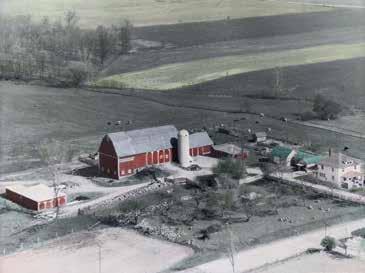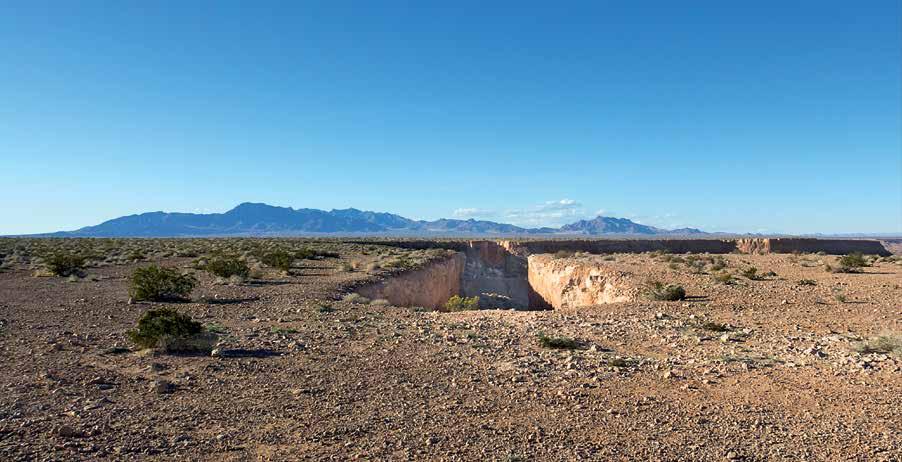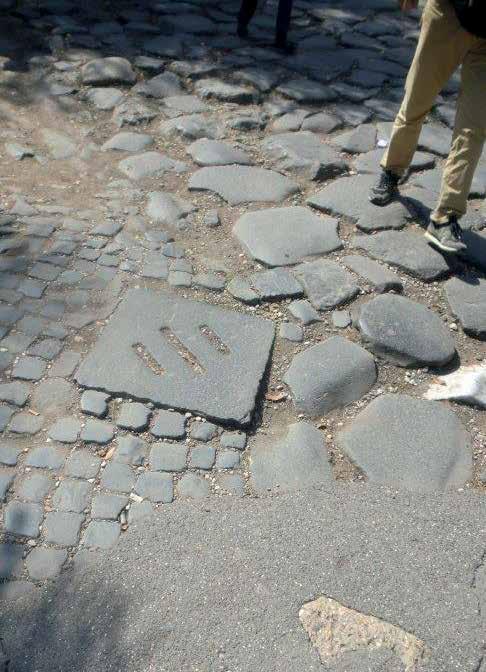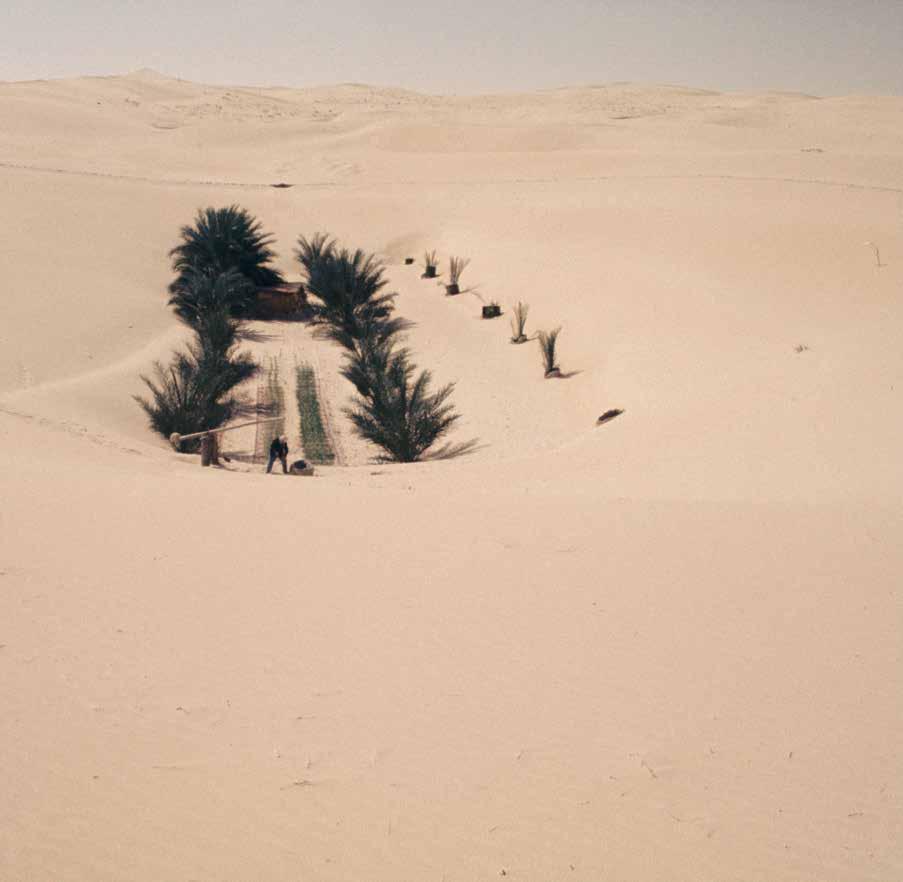
6 minute read
PREFACE: Inspired by Land and Water
from Working Water
Inspired by Land and Water
The farm in southern Michigan.
In 1982, I founded Wenk Associates in Denver, Colorado, with a will to use landscape architecture to explore how to live well in the West. Given the scarcity of water and the dramatic growth in the region, a significant portion of our firm’s practice focuses on how the design of water systems—specifically stormwater infrastructure and urban rivers and streams—can bring greater value to the natural function and livability of cities.
I grew up in southern Michigan on a small farm and graduated from high school believing I wanted to become a farmer. Those early years, shaped by the practicalities of working the land, formed my initial view of the landscape as a commodity. A large summer garden provided vegetables to feed us through the winter, and the farmhouse had two water systems—a well for drinking water and a cistern that stored rainwater from roof drains for bathing and washing. In the winter, our sawmill converted timber from local woodlots into lumber for local construction, and the “waste” that resulted from milling the timber provided fuel for heating our house and bedding for cattle.
As a teenager in the 1960s, the rapidly developing environmentalist movement introduced me to Stewart Udall’s The Quiet Crisis, Rachel Carson’s Silent Spring, and Aldo Leopold’s Sand County Almanac. My old notion of “landscape as a commodity” evolved into a better awareness of environmental issues, and with that, a new appreciation of the landscape’s intrinsic beauty and functional value as a natural system. This expanded interest in the land and ecological responsibility and a growing interest in art led me to take an introductory course in landscape architecture in college, where I began a new career path that would integrate my interests and my evolving landscape values.
My undergraduate studies in landscape architecture at Michigan State University gave me an excellent technical introduction to the profession and to designed landscapes. My studies introduced me to contemporary and historic landscape design precedents, but there was little discussion of land stewardship and how the profession could address growing concerns for environmental issues. I sought to reconcile my undergraduate education with my core values and the worldview that my upbringing had formed.
Shortly before completing my undergraduate degree, I read Ian McHarg’s Design with Nature. His critical connections between natural landscape processes and the planning and design professions encouraged me, as did Anne Wiston Spirn’s The Granite Garden, a book that argues cities are a part of the natural world and should be designed to preserve and harness natural processes to make cities more livable. Upon graduation, these newfound principles provided a new universe of possibilities for me that more closely resembled my intuitive knowledge of, and commitment to, the landscape, forming the theoretical foundation for my life’s work.
After three years of practice and nine months of travel across Europe and North Africa, I enrolled in a master’s degree program in landscape architecture at the University of Oregon. There I developed an understanding of the importance of context and the intrinsic value of vernacular landscapes as I was introduced to more writers and thinkers, including J.B. Jackson, William Cronon, and Kenneth Helphand.
In the late 1960s, the Land Art movement began to unfold, suggesting how elements of traditional landscape design, design at the scale of the city, and the broader vernacular landscape could be integrated. The land art of Michael Heizer, especially his
large earthworks like Double Negative (1969), inspired me, as did Walter De Maria’s landscape installation The Lightning Field. The scale of these works reflects the qualities of the Western landscape, and their execution equals the directness of large public works projects.
Early in my career, I worked with civil engineers on a creek restoration project where I began to understand the potential value of urban infrastructure as a means to improve the livability and environmental qualities of our cities, and the critical role that civil engineers play in the design of stormwater systems. The need for and value of urban stormwater systems became obvious—stormwater systems have been fundamental to the development and growth of cities since antiquity. Unfortunately, the scale and shortsighted methods of city-building today contribute significantly to the declining quality of urban waterways and compromise the function of the natural water cycle. This understanding, and a desire to improve on the design of stormwater infrastructure, helped to form the foundation for Wenk Associates’ work.
An underlying theme in the firm’s professional practice is to “reinvent the storm drain.” For me, this is a metaphor for expanding—down to the most basic details— the components of stormwater systems to invent new strategies for effective stormwater controls, and to promote the restoration of the natural functions of urban waterways in ways that add beauty and value to the urban landscape.
The projects described in this book have various influences. Some integrate the simplicity exemplified by the work of land artists and become a part of natural landscapes and processes, while others reflect more traditional landscape design principles. All the projects demonstrate aspects of working water, whether through practical and functional urban stormwater systems or urban stream rehabilitation. Our project examples mediate between the large-scale industrial qualities of contemporary single-purpose stormwater systems and the preindustrial, more humanly scaled, ways of living on the land that are well crafted, integrating function and beauty and a respect for context.
The environmental crises we face today—especially climate change and shrinking supplies of clean water—require us to rethink the most basic components of traditional urban systems and to identify a broader toolkit for a more resilient approach to city-building. There has been progress. The “big moves”—large, individual, public works projects—have transformed how communities view waterways and have redefined the value of urban waterways and urban stormwater. Small-scale incremental implementation of green infrastructure, such as green roofs, stormwater gardens, or porous pavement can be effective at improving water quality. This piecemeal approach—even if large- and small-scale projects are combined—is not enough to meet the national goal of making urban waterways fishable and swimmable. We must expand our approach to implement systems that integrate individual sites and projects to exert greater influence over our common public landscapes and the infrastructure frameworks of the city. We must develop new components that can supplement or replace conventional stormwater systems with natural technologies and adapt this essential city infrastructure to sustain the natural world that we rely on for our existence.
Wenk Associates’ practice seeks to challenge our clients, partners, and cities to identify and institute new green infrastructure methods not only at the site scale, but at the district and community scale, as an updated standard of practice for stormwater-system design in our cities. This book has evolved as a reflection on over thirty years of
our professional work. It is a monograph describing selected projects of the firm that focus on urban water resources. It is a teaching tool for students and the interested public and public officials that wish to explore new ways of managing urban-water resources. It is also a vision for the future.
It is my hope that by sharing our firm’s work and the valuable lessons we have learned, we will inform the next generation of stormwater infrastructure, resulting in healthier urban and natural systems that make our cities better places in which to live.
Bill Wenk, fasla Spring 2021
Double Negative, Clark, Nevada by Michael Heizer. Photo Credit: Ken McCown, 2012

Below: Storm drain, ancient Rome. Traditional stormwater systems have supported the development of cities since ancient times.
Right: My travels through North Africa in a camper van in the winter of 1973 broadened my view of the world and the landscape. I took an early morning walk at the edge of the Sahara Desert in northern Algeria and happened upon this scene. The ability of this farmer to subtly manipulate a hostile landscape by using “natural technologies” to create a productive garden of onions and date palms had a profound influence on my career. His use of the site’s context also demonstrates the essence and beauty of formal garden design.



